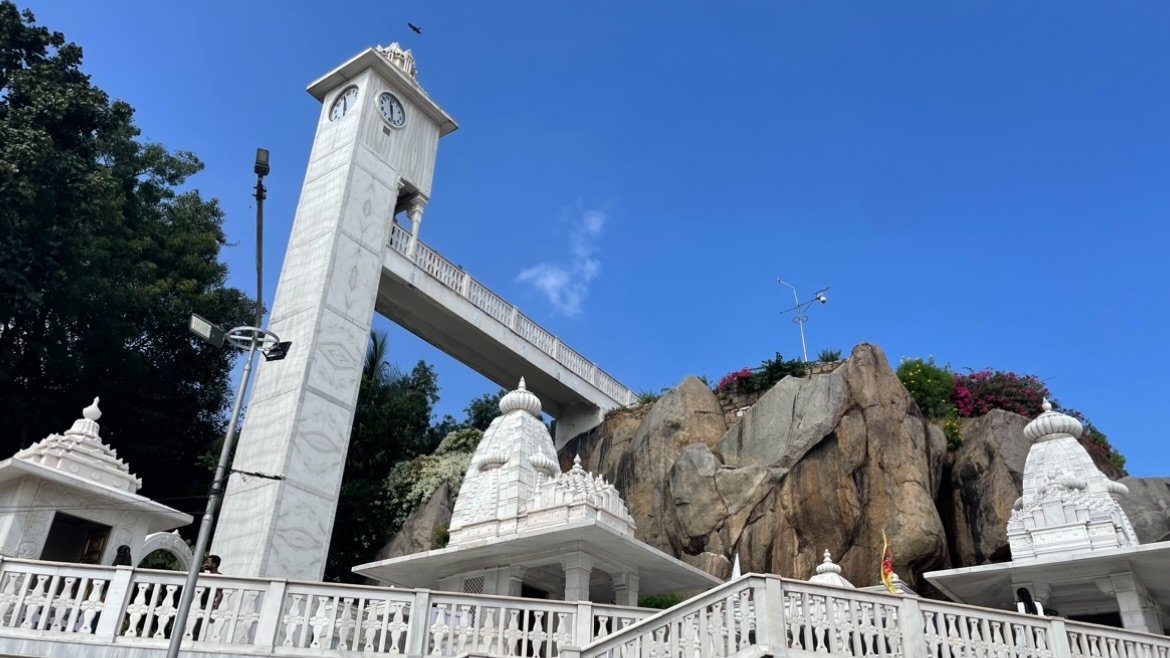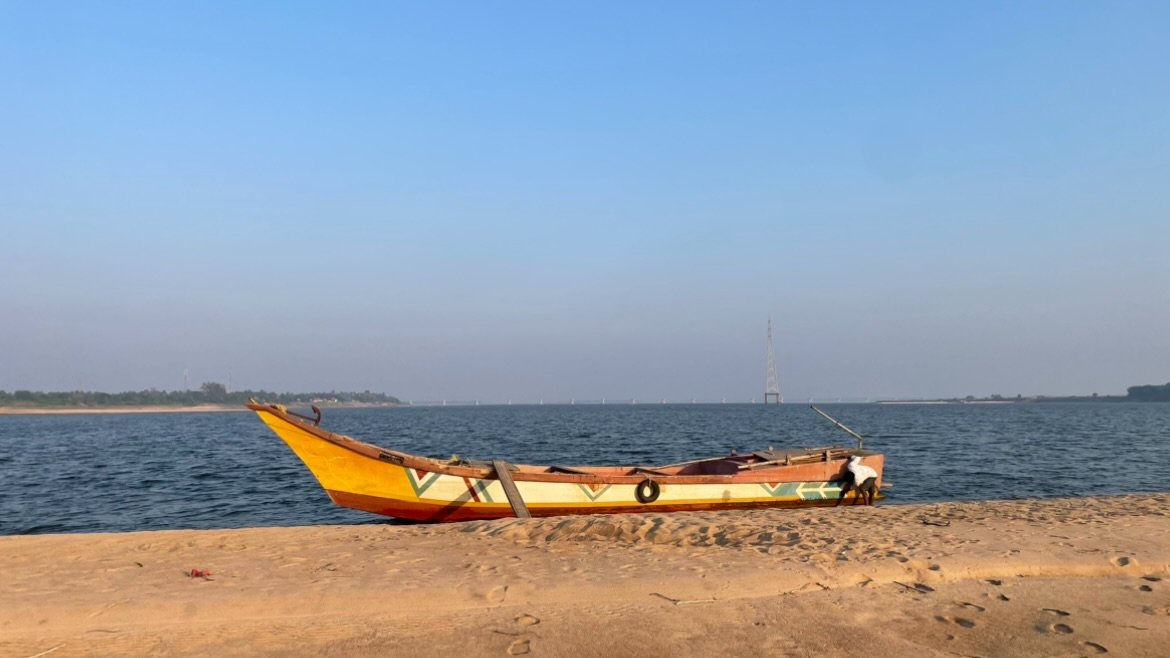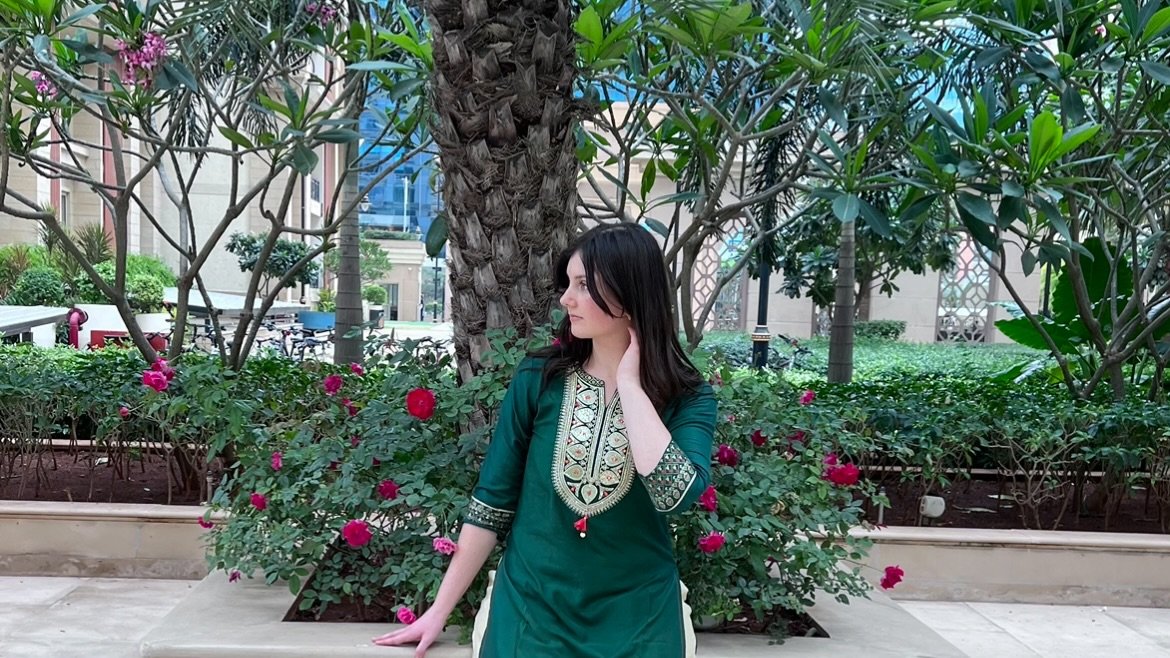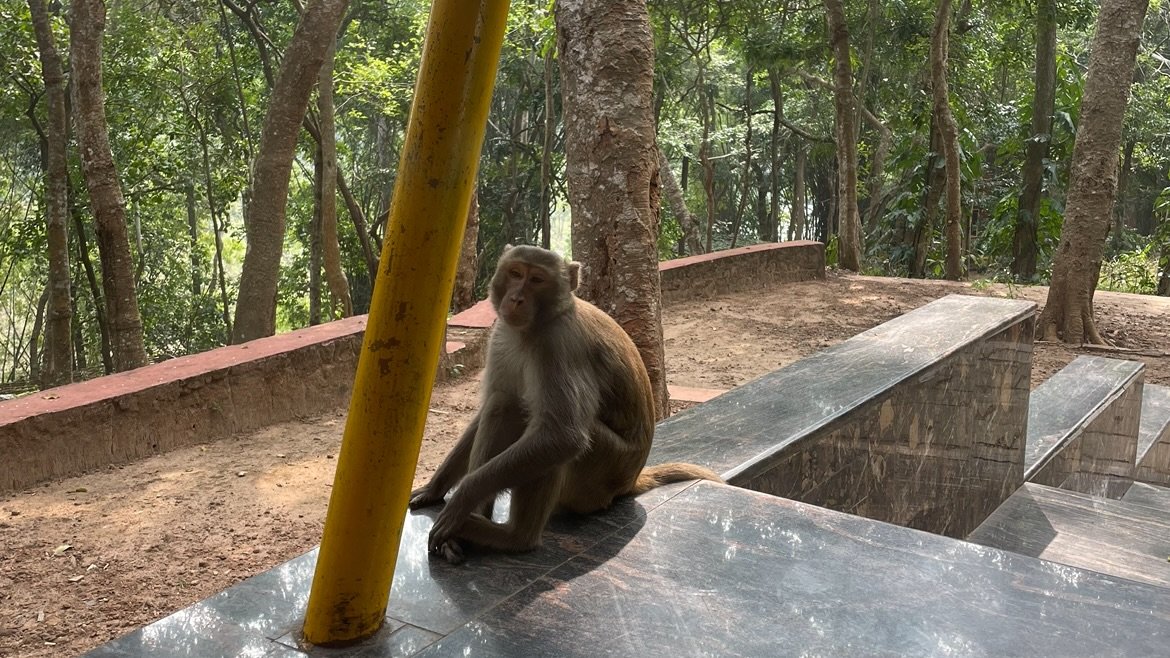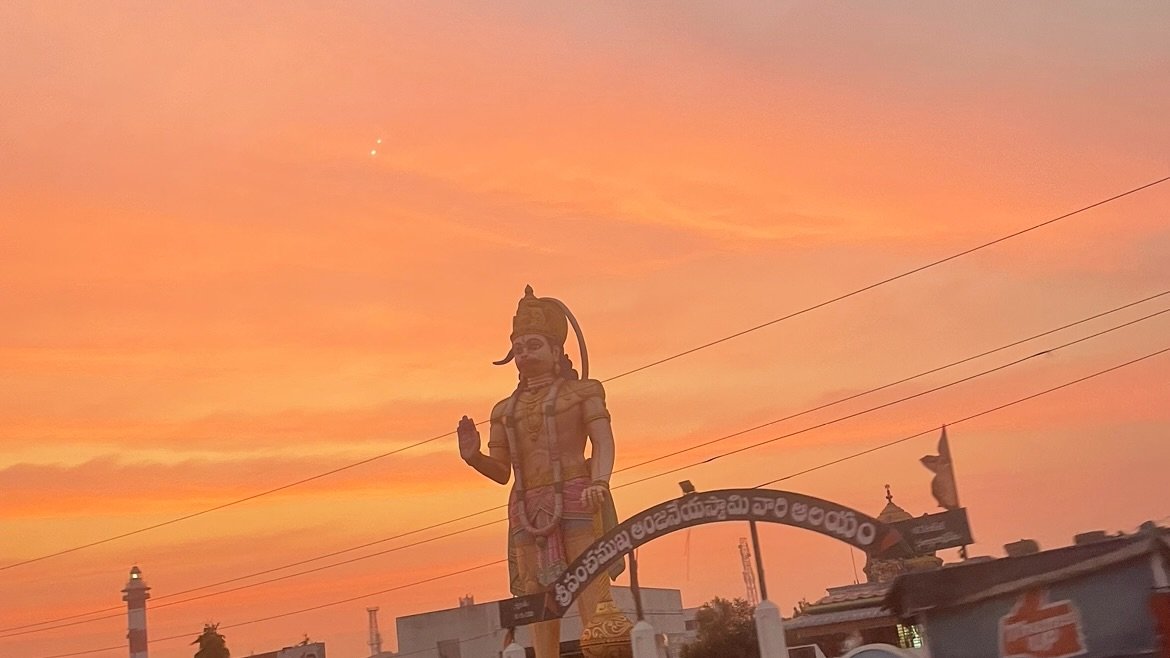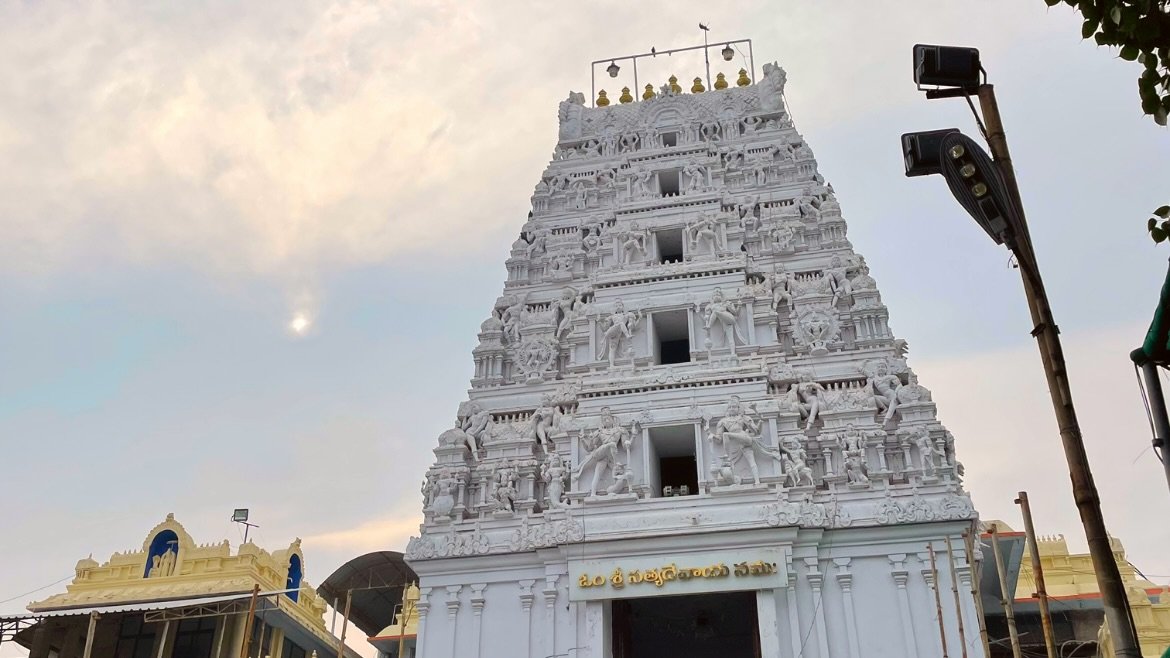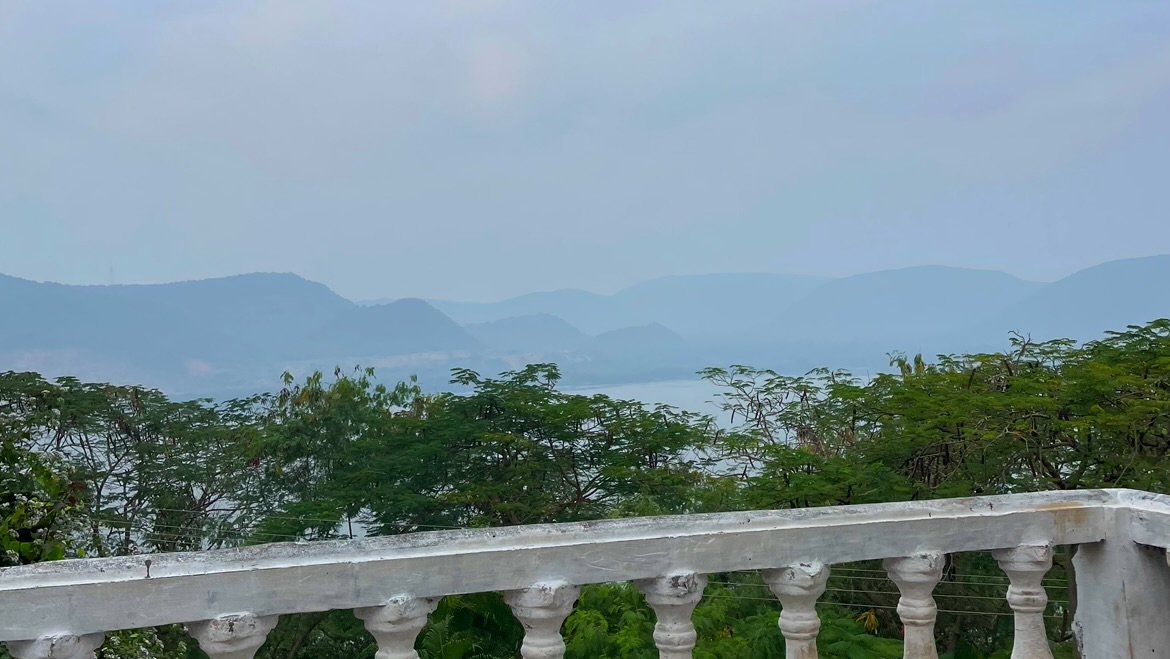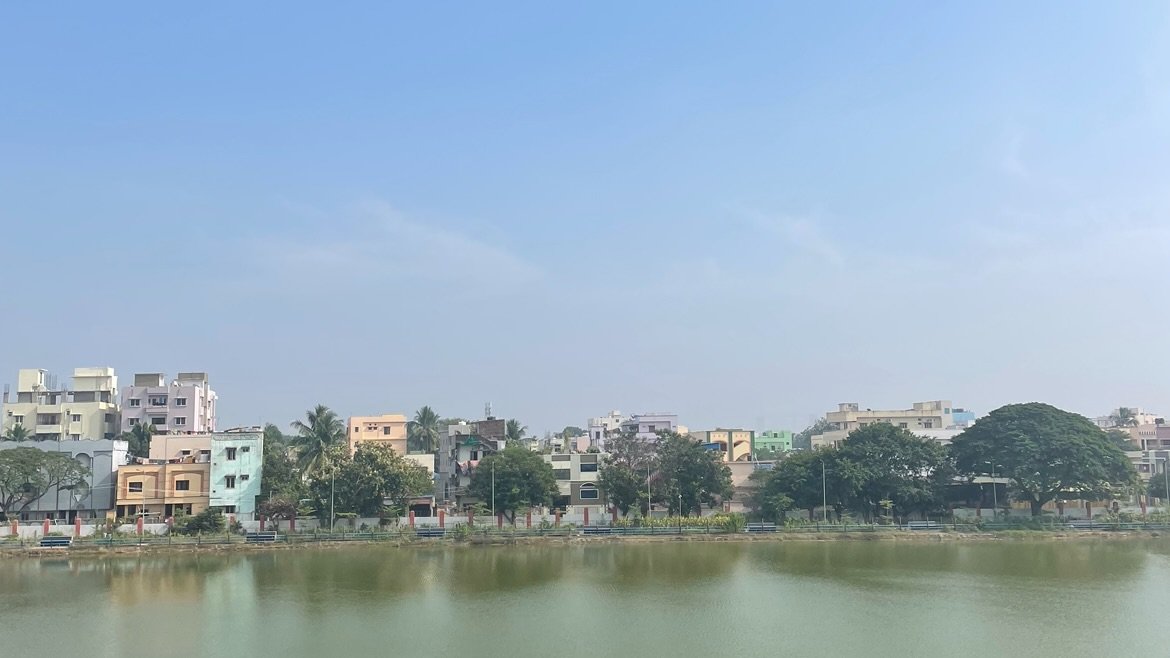My Experience in South India
View of mountains in Maredumilli Forest, Andhra Pradesh ; picture taken by Anieka Sarmer
In the summer of last year, my roommate invited me to go with her to her home state, Andhra Pradesh, in southern India. The trip would be for a month over winter break. I had been out of the country before to visit family in Europe, and had driven a few times over the border of Washington into Canada, but that had been the extent of my international travel. Before this past December, I had never exited the western hemisphere or immersed myself in a culture so diverse, complex, or different to my own as that of India. When she asked me, I didn’t even hesitate about traveling with her to the other side of the world. I had wanted to start exploring years ago, and I could tell this was the moment that would propel me into my future, as well as jump start this blog.
We booked our tickets in October, during the first few weeks of fall quarter. I hurried through the quarter with only the trip and my blog on my mind, finished all my final projects the week before finals, and flew 21 hours on December 8th to Hyderabad, India.
That month was the most experimental experience of my life. I met so many new wonderful people, explored many ancient historical temples and ruins, ventured through city streets, crept through swampy mangroves, played with monkeys, ate the most phenomenal vegetarian foods, and much more. Going into the trip, I had no prior knowledge of India except for the few facts my roommate would occasionally tell me. Once I came back, I felt like I had opened a brand new book and finished the first chapter. There is so much more to India than what I saw and experienced, but I was able to see a tiny sliver of the whole picture, and for that I’m grateful.
Maybe you have been thinking of traveling to India but you have never been before, and don’t know what to expect, or where to go, or how to plan. Reading this blog will give you some insight into what I experienced during my first time there and what I observed during my travels, so you can step into your travels with a clear vision of where you're headed.
I do want to add that these experiences are just specific to the state of Andhra Pradesh, where I was located during my stay. Since India, like the United States, is a massive country with a very diverse, multi-cultural, and multi-lingual population, my experiences most likely will not reflect the experiences one may have in other states across the country.
Recommendations:
Birla Mandir: a Hindu temple in Hyderabad ; picture taken by Anieka Sarmer
Travel with a local:
My first recommendation for you would be to travel with someone who knows the area. I was lucky enough to have my friend with me who had been born and raised in Andhra Pradesh, and was there to walk me through cultural differences, as well as help me navigate my way around the state. With this experience, I was also able to see more of the life in India. We saw tourist attractions and visited national parks but she also introduced me to what it's like to actually live in India. This isn't an experience you would get traveling solo or traveling with a friend, who doesn't have connections to the country.
I would also say that having someone with me who spoke the regional language helped in many situations. Although many Indians learn English in school from a young age, I felt that in a state like Andhra Pradesh where not many foreign tourists visit, most people aren't comfortable communicating in English.
Take a friend with you:
If you don't have the option of going with a local friend, or have room for one more person, I would also recommend going with one or more people who either haven’t been to India before, or who also aren't from there. When going for the first time, it will feel like you’ve become an infant all over again. You won't be able to relate to societal/ cultural structures, the language, and much more. There will be many culture shocks, the language will be very new to you, and as a foreigner you will get extreme amounts of attention good and bad from people everywhere you go.
Because of this "fish out of water" feeling, it may be more comforting to have someone who is going through the same feelings and emotions as you. This is something I definitely struggled with, going alone with a friend who was born and raised there and who didn’t understand how these new experiences were making me feel emotionally or how they were affecting me mentally. I would say part of the excitement can be lost when you're the only one confused all the time, and having another person there to discuss these new experiences with is important to have access to.
The mouth of the Godavari river, leading to the Indian Ocean ; picture taken by Anieka Sarmer
Stay in a group at all times:
As a foreigner and especially if you’re a woman, I would strongly suggest staying in a group wherever you go. If you’re going to more rural areas of India or a city that doesn’t typically get many tourists, people there will not have seen someone who doesn’t look like them in person before. Most people will give you positive attention because they're curious or in awe. However, there will also be people who will use the opportunity of you being foreign to manipulate and take advantage of you.
This is where, as a precautious, I would suggest carrying pepper spray or a small pocket knife if you do go exploring alone or you get separated by the group. This is just in case you run into people who have bad intentions. I had a pretty uncomfortable scary experience in a very public place where I was in a group but I still felt extremely threatened and unsafe. In that situation, I definitely wished I had something to protect myself, so I didn't have to rely on the people around me.
Plan an itinerary :
Unlike other cities I’ve been to in North America and Europe, Hyderabad was not a pedestrian friendly city. One could not travel to an area of the city, roam around, and explore like tourists usually do in a foreign place. I didn’t venture outside of Andhra Pradesh, but I’ve heard that many other Indian cities are like this. Due to the Indian city structure, I would recommend if you’re planning on leaving your lodgings, to form an itinerary of places you want to go either for the day or for as long as you’re staying there. This is so you can have an auto or an Uber drop you off at specific locations and you don’t have to walk far.
A boat on an island along the Godavari River ; picture taken by Anieka Sarmer
Buy traditional clothing:
This is for when and if you decide to go visit temples and possibly go inside them. In most temples it is required or expected to wear traditional clothes in order to enter. Due to the dress code in these establishments, it would be best to wear traditional clothes at any temple you go to. If you’re going to be visiting smaller towns and villages these clothes would also be more appropriate, because the population will be more conservative. I bought one pair of clothes for a house warming puja I attended in the beginning of my trip and continuously used the same pair for visiting temples and villages. I personally wish I had bought more clothes on the trip but I knew I wouldn’t use them in the States and didn’t want them to go to waste.
Me in the traditional Kurti I bought
Buy insect repellent:
Buy some form of insect or mosquito spray/lotion to protect yourself from getting totally mauled by mosquitos. Just after staying a week in Hyderabad, I was covered head to toe in mosquito bites due to a really high spike in the population near to where we were staying, on the outskirts of the city. When they got this bad, they were so itchy that I would scratch, bleed, scab, and then repeat — continuously adding on to the bites all over my body. What helped relieve the itchiness and help the bites heal, was insect bite cream that soothed my skin and prevented me from itching my scabs too much. Getting mosquito repellent and bite cream is something I would extremely recommend to you if you’re not Indian, or have a blood type that attracts mosquitoes.
Be respectful and cautious around animals:
In India you will be sharing space with many other animals who have lived in the region for centuries, and who have adapted to city life with increasing human populations. When roaming around these shared spaces, be respectful of the animals who are there and be cautious about how you interact with them. Most animals are pretty harmless but like humans, animals can get upset, scared, or feel disrespected and will lash out when they deem it necessary. To prevent injury and risk to your health as well as the animals’, this is something I recommend for you to always keep in the back of your mind.
A Langur at a resort in Maredumilli Forest ; picture taken by Anieka Sarmer
Be open-minded:
When traveling you want your mind to be like a sponge soaking up everything you may come across on your journey. I was confronted with many cultural differences during my stay in India but instead of shutting down and making judgements, I pushed myself to engage and learn with an open mind. Anywhere you go, there will be cultural differences that you will have to adapt to while you’re visiting. Training your mind to be spongy and pushing yourself to try new things, is important and something I suggest you prepare for, before stepping out of your comfort zone.
Food:
A butterfly in my friend's family garden ; picture taken by Anieka Sarmer
Options for vegetarians/vegans:
The thing I loved the most about India was the food. I never had to worry about what to eat because there were vegetarian options everywhere, and everything I tasted was absolutely delicious. When I would go into restaurants, the menus would be categorized by vegetarian meals and then meat dishes would be labeled at "non-veg". This gave the idea that eating vegetarian was the norm, which was something that I thought was extremely cool about the culture.
I will say that as someone who rarely drinks or eats dairy products, I did have to conform and switch back from alternative milks to cow and buffalo milk for this trip. This is because alternative milks are a fad that hasn't yet reached Andhra Pradesh, and there are many desserts, drinks, and curries that use milk, cream, and heavy amounts of ghee. There were a few restaurants I went to that had vegan options, but I will warn those who are strictly vegan, going to this part of India may be tricky for you.
Avoiding food poisoning:
Before leaving for India, I had joked with many of my friends that I would get sent to the hospital with food poisoning at least once during my trip. I had known a person who went to Delhi for two weeks and got extremely sick for half of their trip because of food poisoning, so I was mentally prepared to have that happen to me as well. However, I managed to stay healthy the entire month of my stay.
The first rule I followed, was to always drink either bottled or filtered water. Everyone who hosted me was super sweet and bought bottled water for me to drink. I would also fill up my huge Stanley water bottle for when we would go on outings, so I wouldn't get dehydrated.
A second rule I followed was to be extremely smart about street food. I didn't touch street food until the very end of my trip. Most of the time, me and my companions would go out to restaurants or cafes, and avoid the street vendors. The only time I had street food, was in Kakinada when I had Panipuri. My friend and I were walking past the vendor and she said that place would probably have the most hygienic street food we could find, so I tried it and it was delicious.
View of vendors from the top of Charminar, Hyderabad ; picture taken by Anieka Sarmer
Produce markets/ street vendors:
In practically every city, town, and village there is a fresh produce market, where you can buy fresh fruits, vegetables, and other goods from local farmers. I will warn you that in most places, meat markets are connected to the produce markets, so if you are vegetarian or vegan for animal cruelty reasons, I would advise to keep that as a mental note for if you do visit these markets. They are very crowded and busy but extremely fun. There are also street vendors that set up their stands on the sides of roads, so if you're ever in need of a quick bite you, can pull over by the side of the road and get a quick snack, or try some tropical fruits like I usually did.
Charminar in Hyderabad ; picture taken by Anieka Sarmer
Autos:
They are a cheap way to get around the city, since walking isn’t an option. I would say it’s the best way of building a connection with your environment in India and it’s also my personal favorite mode of transportation. Just a little side note: always bargain with the price! They will try to upcharge, knowing that you're foreign and they can most likely get away with it.
Ubers:
The Ubers in India are not as expensive as they are in America and I would recommend taking them if you are trying to travel farther distances that may be slightly uncomfortable in an auto.
A Hanuman statue along Kakinada Beach ; picture taken by Anieka Sarmer
Metro:
A really fast and easy way to get from one side of the city to the other, as well as commuting between multiple cities around south India. I used the metro many times during my stay to get from one end of Hyderabad to the other. When my friend and I needed to get from Kakinada back to Hyderabad, we took a night train with sleeper cars and slept until we reached the city 9 hours later.
Plane:
Since India is a massive country and getting from one side to the other isn’t possible with taking a train, I would suggest this mode of transportation if you’re planning to travel from point A to point B and the train ride is longer than 8 hours. Just make sure there is an airport near you, as well as your destination. This will make travel not as long and less exhausting for you. You’ll also waste less time sitting in a train car, when you could be out exploring. I used this way of transportation during our second journey back from Kakinada.
Me in a tree at Coringa Wildlife Sanctuary
Walking is not an option:
Because traffic does not accommodate pedestrians and there are no sidewalks, walking in India is a nightmare. I would say especially for foreigners who are not used to the constant honking, business, and the chance of getting run over (because cars will not stop for you), you should avoid walking. Even in the smallest town I went to I got anxious crossing the street, and unless you’ve been in that environment before or are with people who have, I would recommend literally any other mode of transportation.
Culture Shock:
View from the top of Golconda Fort, Hyderabad ; picture taken by Anieka Sarmer
Having maids is Common:
In India, it is very common to have house staff who clean the house, do dishes, and prepare the food. This was something that my friend explained to me before we got to India but once I was there, it still shocked me a little. I was raised in the American and European middle class ideals that if you are capable of doing it yourself you do it yourself, so it was extremely challenging for me to allow someone else to wash my dishes, wash my laundry, and clean up my messes. however, people in India who have been raised around maids believe that instead of wasting precious time doing chores, it would be better to employ someone, provide them an income, and have more time to spend on being more productive in other ways.
Punctuality:
As a Dutch American who definitely inherited the trait of punctuality, I learned more about that side of me while I was in India because punctuality is not followed there. When the friend groups I mingled with would go out to restaurants, we would either arrive way earlier than our reservations, or we would arrive way later that our reservations. There was a time when we were waiting for family friends to meet us at a restaurant where we had a reservation and they were almost an hour late. No one in the group seemed to be annoyed about it except for me and the American cousins of a friend. This was something I had to get used to and if you're also a punctual person, you will have to learn as well.
Annavarum Satya Narayana Swamy Temple, Andhra Pradesh ; picture taken by Anieka Sarmer
Separate Charges for Foreigners:
When going to tourist attractions, parks, museums etc., you may experience having to pay a higher amount than your native friends, because you are a tourist. You may be able to trick the workers at the ticket stands if you don't appear foreign, but I stood out very much with my pale, white, freckly skin, and thin, straight, brown hair. As a foreigner you are required to pay 10 times more than your native friends. I actually don't know the reason for this and no one that I traveled with knew either, but I thought it was amusing. I could only imagine the backlash if attractions in the United States did this.
Gendered Train Cars and Parking Spots:
This was a culture shock that I thought was the most interesting, because I didn't fully understand whether it was accommodating or offensive. When visiting the mall, there was parking closer to the entrances of the mall reserved for women, which me and my friend thought was strange and also slightly offensive. We thought that it meant officials assumed women needed parking close to the entrances because they couldn't exert as much energy or they weren't as good at driving.
However, now that I have reflected on it, I would assume that it's to keep women safer in parking garages, where assaults and kidnappings are common occurrences by reserving closer spots for them. I realized this because on the metro, the train cars were also gendered. There were cars reserved only for women, which I thought was strange. However, my friend explained to me that in spaces like train cars, where it's extremely crowded, groping and harassment is common and officials put these reservations in place for women to feel safer when commuting.
Mountain view from Annavarum Satya Narayana Swamy Temple ; picture taken by Anieka Sarmer
Arranged Marriage:
Although beliefs about marriage are slowly transitioning among the younger generations, arranged marriages are still way more common in India. In India there are two different types of marriages. There is the traditional arranged marriage, which is still considered the norm in most regions of India. They are especially common in towns and villages which tend to have more conservative populations. In arranged marriages, there is the belief that first a couple gets married based on caste, financials, and other factors, and then throughout the marriage, the couple learns to love each other. In this system marriage comes first and then potentially love.
Then there is the up and coming marriage type called a "love" marriage. These marriages have just recently in India's history become an accepted form of marriage. However, in many places they are still taboo and most parents still prefer to arrange their children. In "love" marriages the belief is that you must love the person first and want to be with them through sickness and health all the way until death, then as a couple you get married. This is the system which has been most common in western cultures for decades, but is only now surfacing in India.
Outdoor Activity During the Day is Avoided:
Taking naps and avoiding the sun during the day is the norm in India, because the sun is extremely strong and hot during the peak hours. Tanning is not enjoyed by the public because dark skin is not considered beautiful, so the sun is avoided. It is most common for people to wake up early in the morning and do their walking and shopping while the sun's rays are still weak, go to work or sleep in the afternoon, and then go out again during the evenings and nighttime. This is a routine that I never got used to while I was there, but if I had stayed longer I may have gotten used to.
Kakinada, Andhra Pradesh ; picture taken by Anieka Sarmer
Thank you for reading. I hope you found the experiences I shared entertaining, and that you can use what you learned from this blog on your own India adventure. I will be posting more blogs about my trip in the future, so follow my instagram, @aniekasarmer , for more travel content and updates.
Now go out and explore the world!
Love,
Anieka ♡

